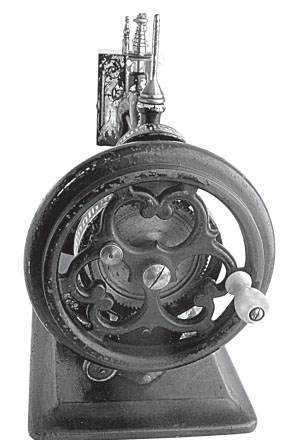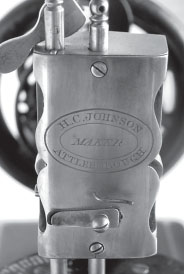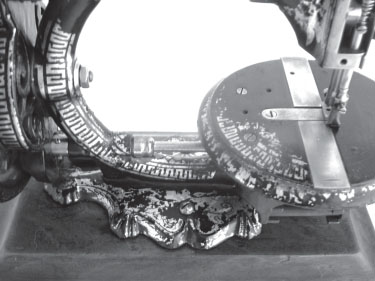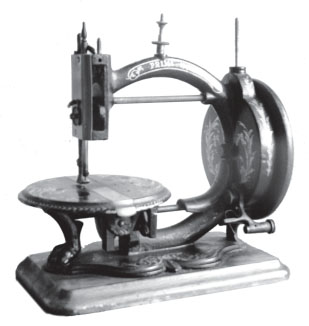We all love a mystery

Don't you just love a mystery.....?
This one has had me tearing my hair out. Take a look at the large picture. It's the only known machine carrying an H C Johnson badge and an address given simply as Attleborough.
Now, of course, the first thing necessary to decide is which Attleborough we are talking about. There's one in the USA - in Massachusetts - and another in the county of Norfolk in the United Kingdom.
Massachusetts in New England was, of course, the Silicon Valley of sewing-machine development in the USA in the 1860s - the likely date of the machine - but there's no record of an H C Johnson having a business there. Yet, in England, Attleborough was then a sleepy hamlet - certainly not able to support a sewing-machine retail business, let alone a manufactory. But the machine is so typically British and has no US characteristics, so we'll settle on the very strong likelihood of it having been made in the UK.
But where and by who?

The wheel on the Johnson is far more detailed than the plain one on the Prima Donna.
This is no cheapo German clone but a solidly-engineered (over-engineered in many ways) machine.
It was the shape of the stitch plate that gave the first clue. I'd seen that bevelled rim before and also the detachable support under the plate rang bells. Soon the Johnson was sharing table space with a Prima Donna and we could start to really appreciate the similarities.
Yes, the stitch plates are virtually-identical castings. The tops have the same dimensions; the shuttle and bobbin are interchangeable and the feed mechanism has only small dimensional differences.
In fact, the more one examines the two machines, the more one wonders about the differences rather than the similarities. The shuttle carrier on the Johnson is fabricated from forgings whilst on the Prima Donna a simple machined casting is used. It was at this stage that the theory started to evolve.

The text on the face plate clearly indicates our H C Johnson as the "maker" but I wonder...
Could it be that the Johnson was an earlier form of the Prima Donna?
Attleborough is just 40 miles from the Whight & Mann factory in Ipswich where the Prima Donna was produced. So we have a possible geographical connection. And the more one looks, the more the Prima Donna begins to look like a cleaned up and a "down-to- a-price" version of the Johnson.
The elegant faceplate on the Johnson gives way to a much plainer one on the Prima Donna. That ornate base is changed to one of the same basic shape but far simpler. Rather than the pierced gear cover, we have a plain integral one, and the wheel becomes a solid disc rather than the delicate filigree design.
OK, perhaps the theory is a little thin, but the geographical proximity and the unique design feature of the bolt-on cloth-plate support and the shape of the plate itself lend some credence to the idea.
If we are right, it would date the machine (from the MS collection) to the late 1860s or early 1870s.

HC Johnson Stitchplate Closeup
However, there's one thing wrong with the theory. The Prima Donna might have been cheaper to produce in quantity - but with patterns, jigs and tooling already existing, it would have been a brave man to junk all this and virtually start from scratch.
Still, let's not spoil a good story. And, remember, it's the best theory we've got so far.

The Prima Donna Sewing Machine
For more information on the Prima Donna see the Whight and Mann article in issue 80






